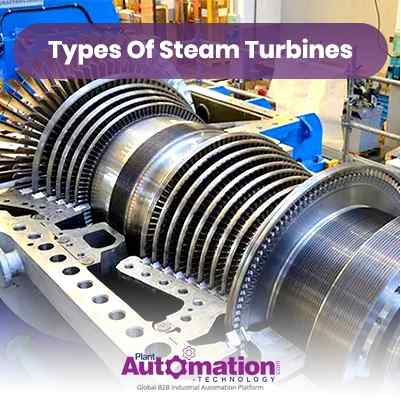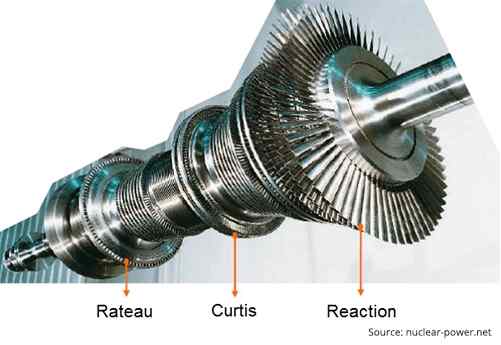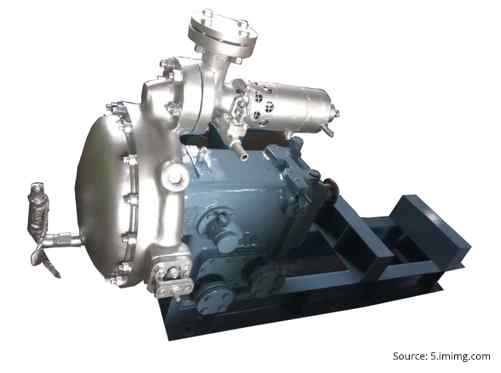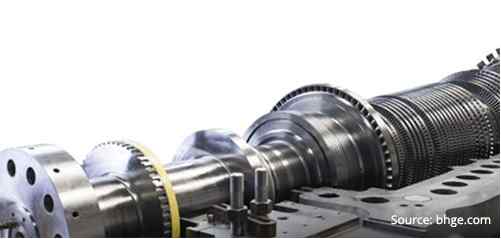Types of Steam Turbines

Types Of Steam Turbines:– The best definition for a turbine one might provide is that the conversion of steam’s heat to mechanical work, that is finished on a rotating output shaft. it is a type of heat engine machine. Variable from little to massive, the turbines are created in a very big range of power capacities. Turbines have several benefits over steam engines. Higher thermal efficiency will be meeting with steam turbines. As there aren’t any rubbing components, the lubrication is additionally very easy. This is best for jumbo power plants.
Working Principle of Steam Turbines
The
steam turbines is work on principle of the “dynamic action of steam”. Super-heated
steam coming from to the nozzles
attacks the rotating blades that are fitted on a disc mounted on a
shaft. A dynamic pressure on the blades is manufacture by this high-speed steam, during
which the shaft and blades each
begin to rotate within the same direction.
Depending on their operating pressures, size, construction and lots of alternative parameters, there are 2 basic varieties of steam turbines.
1) Impulse Turbine
2) Reaction turbine
The main distinction in these turbines depends on the way the steam is expanded because it passes through the
turbine.
Impulse steam turbines

The steam starting up at a really high speed through a fixed nozzle, strikes the blades mounted on the outer boundary of a rotor. While not ever-changing its pressure, the blades modify the direction of steam flow. The rotation of the turbine shaft primarily happens because of the modification of momentum. Few examples of the {impulse turbine|turbine} are Brown-Curtis turbine, Curtis turbine and Rateau turbine. De Laval was the initial turbine having a single-blade wheel.

Typically variable the degree of reaction and impulse from the blade root to its outer boundary, modern steam turbines frequently use each impulse and reaction in the same unit.
Reaction steam turbines

As the steam passes over the blades, it expands each in mounted and moving blades in a reaction turbine. There happens a pressure drop each in moving and fixed blades ceaselessly. This turbine is slightly completely different from the impulse, wherever it’s composed of moving blades alternating with mounted nozzles. In distinction to the impulse turbine, the pressure drop per stage is lower within the reaction turbine. Reaction turbines are typically a lot of efficient. An example of this turbine is Parson’s turbine.

A reaction turbine would need about double the quantity
of blade rows as a impulse turbine
for constant thermal energy
conversion. And this makes the reaction
turbine for much longer
and heavier.
Now that you just know how the various steam turbines work, let’s have a brief glimpse on their variations.
Impulse turbine highlights
•
The blades mounted to the rotor are stricken by an
impulsive force.
• Once the steam passes through
the nozzles, it expands fully
and its pressure remains constant.
• The blades are symmetrical in form.
• Speed is high in impulse turbine,
since the speed of steam is
high.
• The quantity of stages needed for manufacturing same power very
less.
• High blade potency curve.
Reaction turbine highlights
•
The vector of reactive and
impulsive force strikes the blades mounted
to the rotor.
• The pressure cannot expand totally.
only it passes through the
nozzles and rests on the rotor blades, it partly expands.
• The blades are asymmetrical in
form.
• Because the steam speed is lower in reaction turbine, speed so lower than impulse turbine.
• To develop constant power, it needs additional stages.
• The blade potency curve is
lower compared to the impulse turbine.
Another necessary facet relating to the steam turbines are that the steam turbine governing system. Regardless of variation of its load, it’s a technique used to maintain constant steady speed of turbine. The aim of this could be to provide steam into the turbine in such the way that the turbine provides a continuing speed as so much as possible below variable the load.
Reference:- Plantautomation-Technology





























